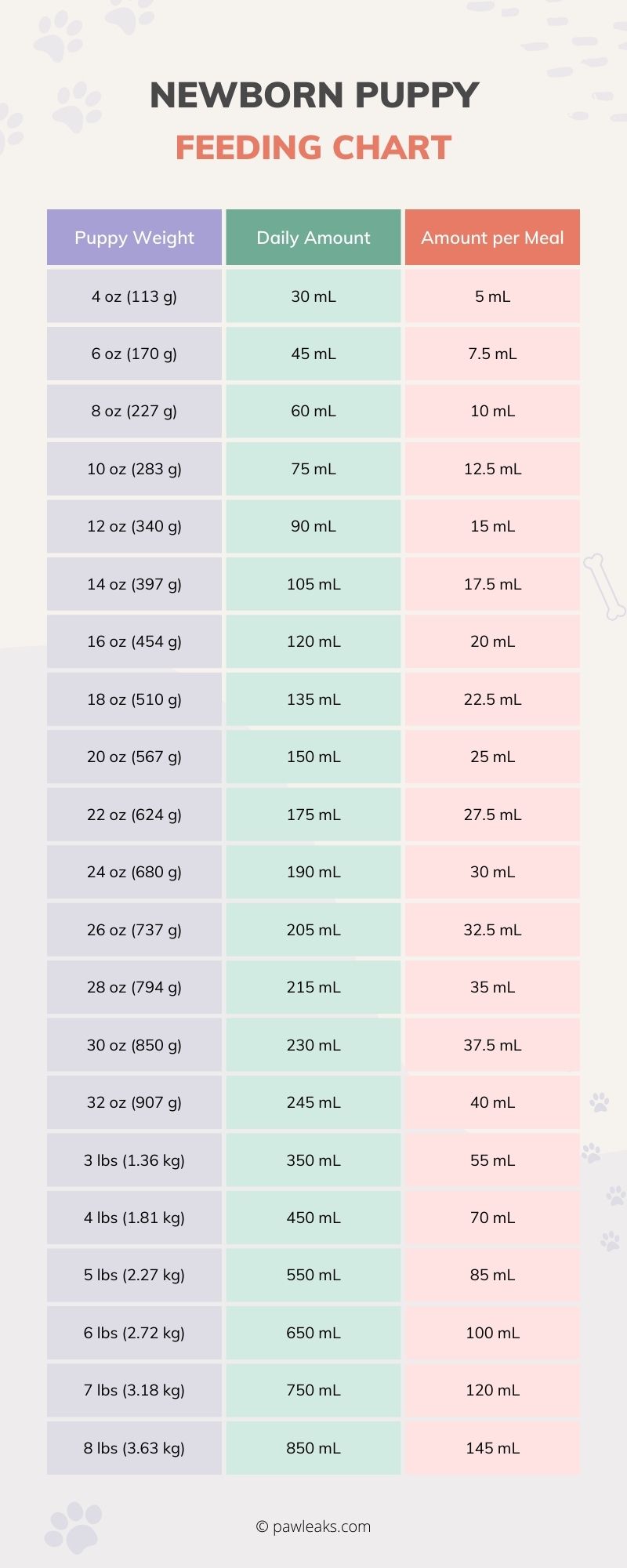Newborn puppies are relatively immature at birth compared to many other mammals, and large breed puppies are less mature than small breed puppies. The period of time they spend being nursed by their mother (bitch) helps the newborn puppy transition from in utero nutrition to solid food.
The first few days of a mothers milk is known as colostrum. Colostrum is very high in protein and transfers important immune system elements. Whenever possible, newborn puppies should receive their mothers milk as it sets the stage for normal immune system function and protection from disease.
If the mother is incapable of raising her puppies herself, the puppies are considered orphans and some important needs must be met in order to ensure their survival. These needs include appropriate heat, humidity, nutrition, elimination, sanitation, and social stimulation.
Fortunately, most orphaned puppies can be raised successfully with a bit of care and attention to detail. Using a logbook to track their development is a good place to start.
How Many ml of Milk Should a Newborn Puppy Drink?
A newborn puppy should drink 15 mL of milk for every 2 oz of body weight and the starting point depends on the puppy’s birth weight, it can be as little as 15 mL per day or as high as 120 mL per day.
It’s crucial not to feed the daily amount in one, two, or even three sittings.
Puppies have a limited stomach capacity and feeding too much in one sitting can result in serious health issues and emergencies.
The starting weight is different for every puppy.
A Pomeranian, Chihuahua, or Yorkshire Terrier can weigh 2-5 oz (57-152 g) at birth.
On the other side is the Rottweiler or German Shepherd who can easily weigh 1-2 lbs on day one.
I visited my Rottweiler at 4 weeks and was shocked at how much weight she gained in just 4 weeks when we brought her home.
She came to us with slightly more than 16 lbs (7+ kg) and I’ve seen pups at 22 lbs (10 kg) at just 8 weeks of age.
Giant breeds such as the Saint Bernard, Newfoundland, or the English Mastiff can weigh even more.
Tube Feeding Chart For Puppies (Graphic)
A feeding chart comes in handy if you have to feed a newborn puppy with a tube or puppy milk bottle to make sure they get the amount of milk that corresponds to their body weight.

Please be aware that this chart is just for informational purposes. Consult your vet or the label of your milk replacer to avoid under or overfeeding your dog.
How often should you feed a newborn puppy?
When mom’s milk supply isn’t adequate to support the healthy growth of her puppies, VCA veterinary experts recommend supplemental feedings one to six times per day. Newborn orphaned puppies less than 2 weeks old should be fed every three to four hours while 2- to 4-week-old puppies should do well being fed every six to eight hours. Don’t forget, the feedings should be equally spaced over 24 hours.
FAQ
How much should I feed my newborn puppy?
How much milk should a 3 day old puppy drink?
Can you overfeed a newborn puppy?
How much ml of milk should a newborn puppy drink?
